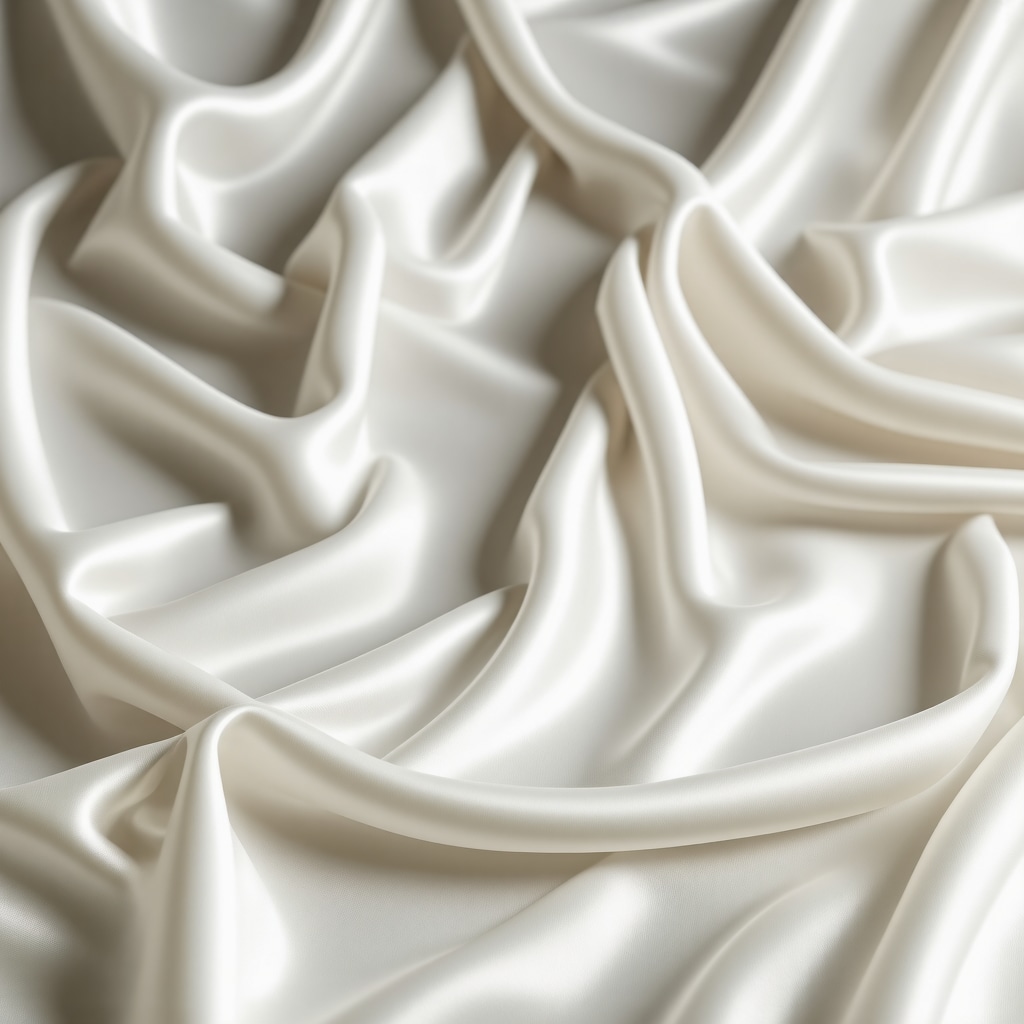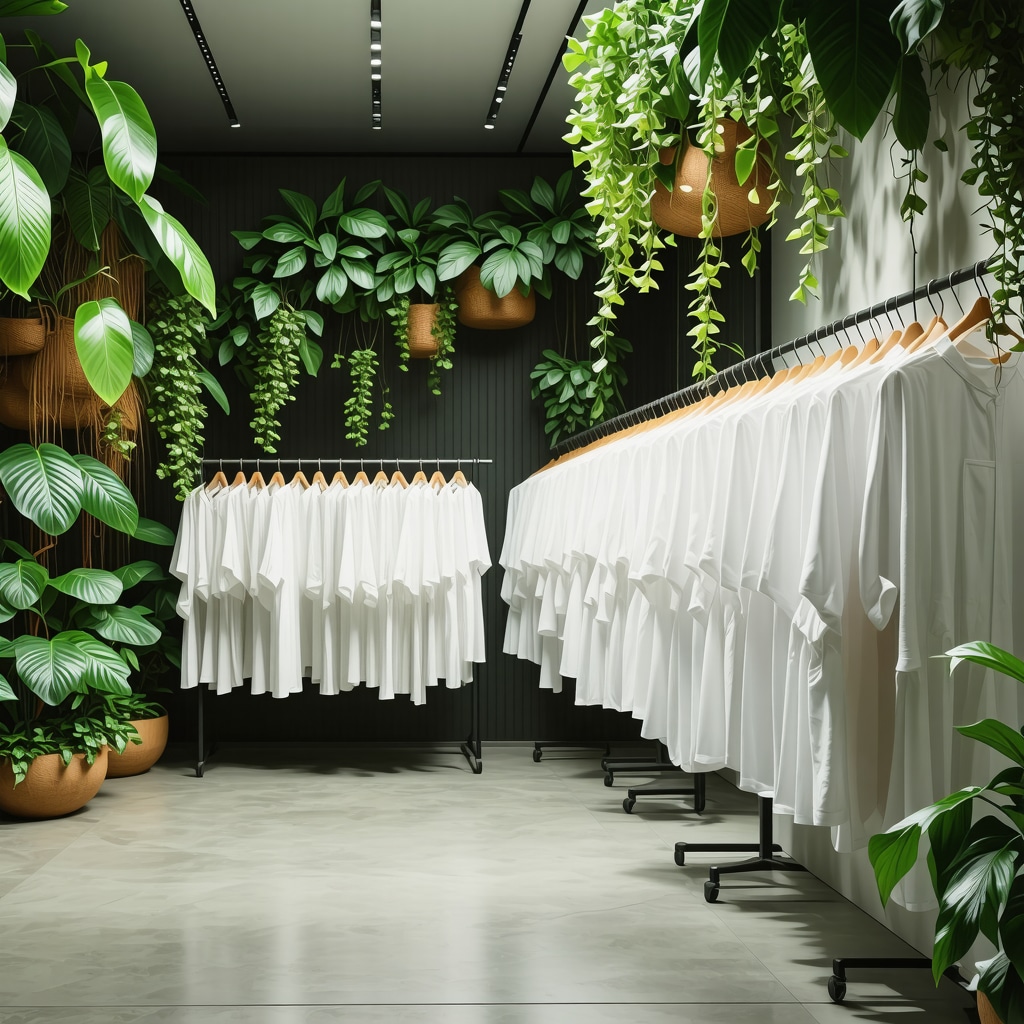How I Discovered the Magic of Chemical-Free Dry Cleaning
I’ll never forget the first time I realized that traditional dry cleaning chemicals might not be the best choice for my clothes or my health. It was after a routine dry cleaning trip when I noticed a faint, lingering solvent smell on my favorite blouse. Curious and a bit concerned, I started researching alternatives and stumbled upon chemical-free dry cleaning methods. From that moment on, my approach to fabric care completely changed.
The Gentle Power Behind Chemical-Free Solutions
What fascinates me most about chemical-free dry cleaning is how it relies on plant-based solvents and safer alternatives instead of harsh chemicals like perchloroethylene (perc). These eco-friendly methods not only preserve the integrity of delicate fabrics but also reduce environmental impact—a win-win. In fact, according to the Environmental Protection Agency, perc is classified as a hazardous air pollutant, which made me even more eager to find greener options for my wardrobe.
Why Should You Consider Switching to Chemical-Free Dry Cleaning?
Maybe you’re wondering if these alternatives really work for all kinds of garments or if they’re just a trendy gimmick. From my experience, chemical-free dry cleaning is highly effective at removing stains while being gentle enough for sensitive fabrics and skin. I personally turned to services that specialize in eco-friendly garment care like those offered by non-toxic dry cleaners and found that my clothes stayed vibrant longer without the harsh chemical residue.
Personal Insights on Sustainable Garment Care
One of the best parts about embracing chemical-free dry cleaning is the peace of mind it provides—knowing I’m protecting not only my clothes but also my family’s health and the environment. Particularly with baby clothes or sensitive skin, safer cleaning methods are invaluable, as highlighted in this insightful post on eco-friendly dry cleaning for babies’ clothes. It’s truly a future-forward choice that I wish I had made years ago.
If you’re curious about exploring this safer, greener path for your wardrobe, I’d love to hear about your experiences or questions. Share your thoughts in the comments or check out more on sustainable garment care here.
Innovative Techniques Elevating Chemical-Free Dry Cleaning
Modern advancements have propelled chemical-free dry cleaning beyond a simple alternative to traditional methods. Techniques such as liquid carbon dioxide cleaning and silicone-based solvents are gaining traction for their efficacy and fabric-friendly properties. These technologies not only minimize environmental hazards but also enhance the longevity and vibrancy of luxury fabrics, making them particularly appealing for high-end wardrobes. For instance, luxury green dry cleaning services in Tampa, FL utilize these cutting-edge solutions to deliver pristine results without compromising sustainability.
Addressing Common Concerns: Are Chemical-Free Methods Suitable for All Fabrics?
One frequent question I encounter is whether chemical-free dry cleaning can handle the diverse range of fabrics people own, from silks and wools to synthetics and blends. The answer is encouraging: many plant-based and alternative solvents have been rigorously tested and proven effective across various textiles. However, expert evaluation remains critical because some delicate fabrics may require specific care protocols. This is why partnering with a knowledgeable provider using specialty garment cleaning using organic solvent techniques ensures optimal outcomes without damage.
How Do Chemical-Free Dry Cleaning Innovations Impact Long-Term Fabric Care?
From an expert perspective, the shift toward chemical-free dry cleaning is transformative not just environmentally but also in terms of garment preservation. Traditional solvents can degrade fibers over time, leading to premature wear. In contrast, eco-friendly solvents gently dissolve oils and stains without stripping natural fibers, thereby maintaining fabric integrity and color fidelity. This aligns with findings shared by the EPA’s Design for the Environment program, which advocates for safer chemical alternatives that reduce human and ecological risks.
Moreover, these innovations contribute to reducing household chemical exposure, a significant benefit for individuals with allergies or sensitive skin. Services offering hypoallergenic dry cleaning solutions cater especially well to these needs, combining health safety with effective cleaning.
Practical Tips for Choosing a Chemical-Free Dry Cleaner
When selecting an eco-friendly dry cleaner, look for certifications that verify the use of green solvents and sustainable practices. Transparency in cleaning methods and ingredient disclosure are also good indicators of a trustworthy provider. Don’t hesitate to ask about their solvent sources, waste management, and fabric care protocols. Engaging with providers that emphasize clean label dry cleaning can further assure you’re entrusting your garments to conscientious hands.
Exploring local options like perc-free dry cleaning services near you can also simplify the transition while supporting community-based green businesses.
If you’re interested in diving deeper into these cutting-edge chemical-free dry cleaning methods or want to share your experiences, feel free to comment below or share this post with friends who value sustainable fabric care. For more detailed guides and tips, check out our resources on sustainable green methods in eco dry cleaning.

Reflecting on the Subtle Shifts in Fabric Longevity I’ve Witnessed
Over the years, my journey with chemical-free dry cleaning has revealed subtle yet meaningful differences in how my garments age. Unlike traditional methods, which sometimes left my clothes feeling stiff or slightly faded after multiple cleanings, eco-friendly solvents seem to nurture the fibers gently. This has been especially evident with luxury fabrics I cherish deeply. The delicate textures of silks and the plush richness of wools have maintained their original luster far longer than I expected. It’s almost as if the fabric breathes easier and retains its story without the harsh chemical interference.
This personal observation aligns with research from the EPA’s Design for the Environment program, which highlights how safer chemical alternatives can prevent fiber degradation and extend garment life. Knowing this makes me appreciate the investment in sustainable garment care even more, as it’s not just about environmental responsibility but also about preserving the memories and craftsmanship woven into each piece.
Can Chemical-Free Dry Cleaning Truly Replace Conventional Methods for Complex Stains?
One question I’ve pondered—and often get asked—is whether plant-based solvents and organic techniques can tackle stubborn stains as effectively as traditional chemical solvents. From my hands-on experience and conversations with eco-conscious dry cleaning experts, the answer is nuanced. While chemical-free methods excel at lifting everyday oils, dirt, and even some wine or coffee stains, there are cases where specialized organic stain removal techniques are necessary. These often involve targeted enzymatic treatments or gentle mechanical processes that align with the fabric’s sensitivity.
For those curious about these advanced approaches, exploring organic stain removal techniques for delicate fabrics offers a fascinating glimpse into how innovation meets tradition in fabric care. It’s reassuring to know that these methods not only respect the garment’s integrity but also avoid introducing harmful residues.
How Embracing Sustainable Care Influences My Relationship with Clothing
Choosing chemical-free dry cleaning has subtly transformed how I view and interact with my wardrobe. Clothes are no longer just items to wear and discard; they become cherished companions whose stories I want to preserve. This mindset shift encourages me to invest in pieces more thoughtfully and care for them with intention. It’s a gentle reminder that sustainability starts with valuing what we already own.
Additionally, supporting local eco-friendly services, like the luxury green dry cleaning options in Tampa, FL, fosters a community ethos. It feels rewarding to back businesses that prioritize health and environmental stewardship, which in turn influences my daily choices beyond just garment care.
If you’ve embarked on this sustainable fabric care journey or are considering it, I invite you to share your experiences or questions. Engaging in this dialogue can illuminate new perspectives and deepen our collective understanding of what it means to care for our clothes and planet thoughtfully. Feel free to reach out or explore more on sustainable garment care for luxury wardrobes.
Delving Into the Complexities: Balancing Fabric Sensitivity and Cleaning Efficacy
One of the more intricate aspects I’ve grappled with is balancing the gentle nature of chemical-free solvents with the need for effective cleaning across diverse fabrics. Some garments require a delicate touch—think heirloom silk scarves or baby clothes—while others demand a bit more robustness in stain removal. Understanding this balance has deepened my appreciation for providers offering hypoallergenic dry cleaning solutions designed specifically for sensitive skin and fabrics.
These solutions often incorporate plant-derived cleaning agents that maintain efficacy without compromising safety. Navigating these nuances has taught me that selecting the right service is as much about trust and expertise as it is about the cleaning process itself.
I’m continually fascinated by how evolving technologies and methods in eco-friendly dry cleaning open new possibilities for garment care, blending tradition with innovation in ways that feel both respectful and forward-thinking.

Exploring the Intricacies of Plant-Based Solvent Chemistry in Garment Preservation
Diving deeper into the realm of chemical-free dry cleaning, I discovered that plant-derived solvents possess a unique molecular interaction with fabric fibers, which fundamentally differs from traditional petrochemical solvents. These biobased agents, often sourced from citrus terpenes or other renewable botanical extracts, dissolve oils and grime without disrupting the natural protein or cellulose structures within textiles. This nuanced interaction not only prevents fiber embrittlement but also maintains the elasticity and sheen of high-end materials. My experiences align with findings from the exploration of plant-based cleaning solvents for fresh fabrics, which detail how these compounds facilitate a gentler yet effective cleansing process that extends garment longevity while minimizing environmental footprint.
What Are the Challenges and Solutions in Scaling Chemical-Free Dry Cleaning for Commercial Use?
While the benefits of chemical-free dry cleaning at a personal level are evident, scaling these practices for commercial operations presents multifaceted challenges. Issues such as solvent recovery, energy consumption, and handling of diverse fabric compositions require sophisticated technology and stringent quality controls. Through conversations with industry professionals, I’ve learned that innovations like closed-loop solvent systems and enzymatic additives are pivotal in addressing solvent volatility and enhancing stain removal efficacy. Moreover, integrating digital fabric care profiling allows commercial services to tailor treatments for each garment, optimizing outcomes without compromising sustainability. For those intrigued by these advanced modalities, resources on specialty garment cleaning using organic solvent techniques offer a detailed view of how expertise and technology converge in modern eco-friendly dry cleaning.
Integrating Chemical-Free Practices into a Holistic Lifestyle of Sustainability
Adopting chemical-free dry cleaning has been more than a fabric care decision; it has become a core component of my broader commitment to sustainable living. This choice reverberates through my household habits, influencing everything from laundry detergents to waste reduction strategies. For example, supporting local providers like the luxury green dry cleaning services in Tampa, FL not only ensures expert garment care but also fortifies community-based environmental initiatives. This interconnected approach embodies the principles advocated by the EPA’s Green Chemistry Program, which promotes the design of chemical products and processes that reduce or eliminate hazardous substances. Embracing these principles has deepened my appreciation for how individual choices, when aligned with expert-driven sustainable technologies, can contribute to systemic ecological benefits.
If you’re eager to explore these sophisticated dimensions of chemical-free dry cleaning or share your own nuanced experiences, I warmly invite you to engage with me through the contact page. Together, we can push the boundaries of sustainable fabric care and foster a community committed to conscious, expert-level garment preservation.

Things I Wish I Knew Earlier (or You Might Find Surprising)
The Invisible Benefits Beyond Just Clean Clothes
When I first switched to chemical-free dry cleaning, I expected just fresher garments, but what surprised me most was the subtle improvement in how my skin felt after wearing clothes cleaned without harsh solvents. It’s a quiet transformation, but for someone with sensitive skin, it’s a game changer. This gentle care is something I now appreciate deeply, beyond just the fabric surface.
Not All Eco-Friendly Dry Cleaners Are Created Equal
Early on, I assumed that any green-labeled cleaner would use the same safe methods. However, I learned that some providers truly invest in advanced organic solvent techniques and transparent practices, while others only pay lip service. Looking for certifications and asking detailed questions helped me find trusted services like those offering non-toxic dry cleaning options that align with my values and guarantee fabric safety.
The Delicate Dance of Stain Removal and Fabric Preservation
I used to worry that chemical-free solutions might not tackle tough stains effectively. Over time, I realized that the combination of plant-based solvents with specialized organic stain removal techniques, such as enzyme treatments, offers a surprisingly powerful yet gentle approach. It’s a balance that requires expertise, which is why I now look for providers experienced in organic stain care for delicate fabrics.
Supporting Local Eco-Friendly Services Creates Ripple Effects
Choosing chemical-free dry cleaning isn’t just a personal health or environmental decision—it’s also about community. I’ve seen how opting for local green dry cleaners, like the luxury green dry cleaning services in Tampa, FL, helps sustain businesses committed to sustainability and innovation. This local support feels meaningful and encourages more eco-conscious choices in my everyday life.
It’s More Than Cleaning — It’s Preserving Memories
One of the most touching realizations is how chemical-free dry cleaning protects more than fabric; it preserves the memories woven into each garment. I’ve noticed that my favorite pieces maintain their texture and color longer, which feels like honoring the craftsmanship and stories behind them. This perspective makes me cherish sustainable garment care as a form of mindful living.
Resources I’ve Come to Trust Over Time
Environmental Protection Agency’s Design for the Environment Program: Their thorough research on safer chemical alternatives gave me confidence in understanding how eco-friendly solvents protect both fabrics and health. It’s a trustworthy source I often recommend to friends curious about green chemistry (EPA DfE Program).
Eco Dry Cleaning Florida’s Guides: The detailed posts on sustainable garment care, such as sustainable garment care for luxury wardrobes and plant-based cleaning solvents, have been invaluable in deepening my practical understanding and finding local experts.
EPA’s Green Chemistry Program: Learning about the principles behind designing safer chemical processes helped me appreciate the innovation driving modern eco-friendly dry cleaning. It’s a great resource if you want to grasp the big-picture benefits of these methods (EPA Green Chemistry).
Parting Thoughts from My Perspective
Embracing chemical-free dry cleaning has been a journey filled with learning, subtle shifts, and rewarding discoveries. It’s not just about removing stains or odors—it’s about honoring the life and longevity of each garment while safeguarding our health and environment. From sensitive baby clothes cleaned with care to luxury fabrics preserved with innovation, chemical-free methods offer a thoughtful alternative to traditional solvent-heavy processes.
If you’re considering this path, I encourage you to explore trusted local services, ask questions, and reflect on how this choice aligns with your values. For me, it’s become an integral part of living sustainably and mindfully, a small but meaningful way to care for what matters.
If this resonated with you, I’d love to hear your thoughts or experiences. Feel free to share in the comments or connect through the contact page. Let’s keep the conversation going about how we can all protect our clothes and our planet thoughtfully.


Reading about the shift to chemical-free dry cleaning really resonates with me. I’ve always been uneasy about the chemical smells left on my clothes after traditional dry cleaning, and learning about plant-based solvents as an alternative is encouraging. It’s impressive how these natural solvents not only preserve delicate fabrics but also lower environmental impact — a critical consideration nowadays. I’ve tried eco-friendly dry cleaning services in my area, and I noticed my garments, especially silk blouses and wool scarves, seem to maintain their texture and color better over time, which aligns with the insights shared here.
However, one challenge I’ve wondered about is how widely available these advanced techniques like liquid carbon dioxide cleaning or silicone-based solvents are, especially outside larger cities. Also, are there certain fabrics or stains where traditional methods might still outperform these greener options? I appreciate the mention of specialized organic stain removal treatments; it seems expertise is key in balancing stain removal and fabric care.
For those who’ve switched to chemical-free dry cleaning, what practical tips have you found helpful when discussing options with your dry cleaner or evaluating their claims? How do you assess the quality and transparency of their processes? I’m eager to hear more about others’ experiences, especially concerning the practical side of making the transition.
Samantha, your points really hit home for me as well. When I first explored chemical-free dry cleaning, I found that availability of advanced techniques like liquid carbon dioxide cleaning is often limited to metropolitan areas or specialized luxury services, which can be a barrier for many. However, I’ve noticed that certain plant-based solvent services are expanding rapidly into suburban markets, albeit sometimes at a premium price. Regarding fabrics or stains, traditional solvents might still perform slightly better on extremely stubborn synthetic dyes or set-in grease stains. That said, many eco-friendly cleaners compensate with innovative enzymatic treatments tailored to such challenges, which are gentler on delicate fibers.
In terms of assessing a dry cleaner’s transparency and quality, I recommend asking directly about their solvent types, certifications, and waste disposal practices. A provider willing to share details openly and provide references or third-party certifications (like GreenEarth or EPA Design for Environment) typically signals trustworthy operations. Also, requesting a test clean on a minor garment helps evaluate results first-hand without risking treasured pieces.
For those transitioning, I’ve found it valuable to communicate any fabric sensitivities or stain histories upfront and to look for cleaners experienced in organic stain removal techniques. It’s a process of building trust and understanding, but the benefits—healthier skin, preserved fabric integrity, and environmental peace of mind—are well worth it. What have others found most effective when navigating this learning curve with their eco-friendly dry cleaners?
Reading through the detailed experiences shared here about chemical-free dry cleaning, I’m struck by how these methods seem to align fabric care with eco-conscious living in genuinely meaningful ways. Like the initial discovery phase described, I too became more aware of the chemical residues left on clothes—and more concerned about both the environmental and personal health impacts. One thing I’ve noticed in my experience with plant-based solvents is their gentleness, not just on fabrics but on the skin, which has been especially beneficial for my family members with sensitive skin conditions.
While the article and previous comments mention that traditional solvents might still outperform on very stubborn stains, I’ve found that many eco-friendly cleaners have made impressive strides by combining enzymatic stain treatments with these greener solvents. This hybrid approach seems to address the stain challenge without compromising fabric longevity or health safety.
A challenge I face, however, is identifying trustworthy eco-friendly dry cleaners locally. Beyond certifications, I find that transparency and willingness to explain their processes really matters. Asking about solvent recovery and fabric-specific care protocols gives me confidence.
I would love to hear if others have discovered effective ways to evaluate and build trust with local green dry cleaners, especially in areas where options might be limited. How do you navigate this and ensure your clothes and health are genuinely protected?